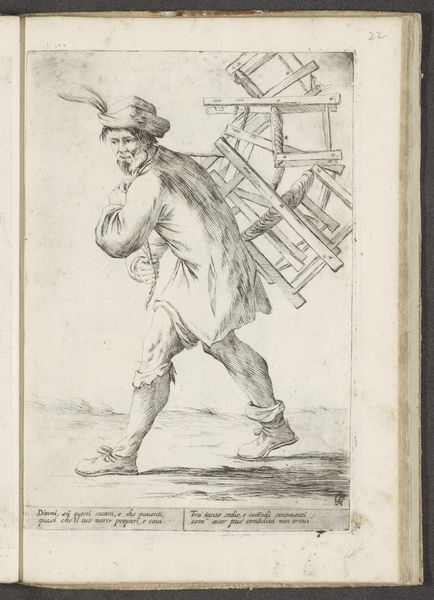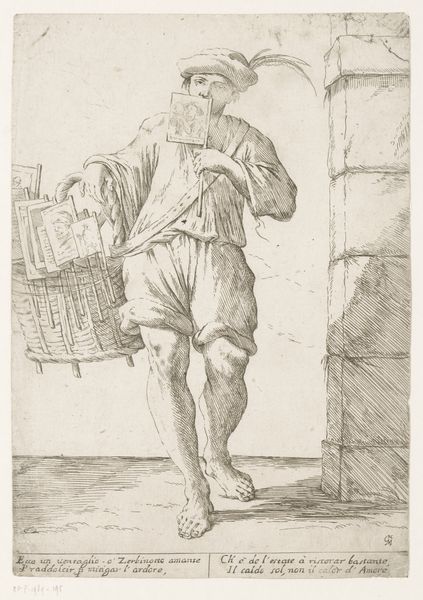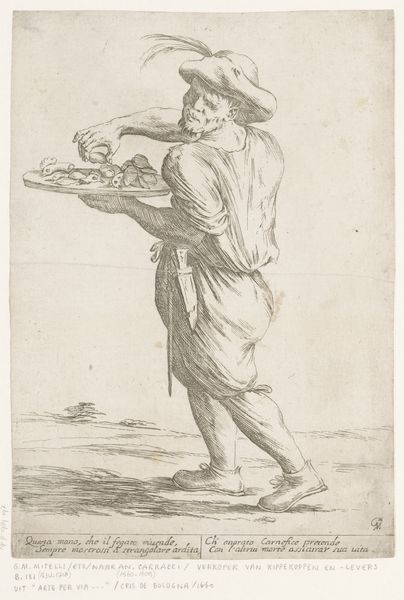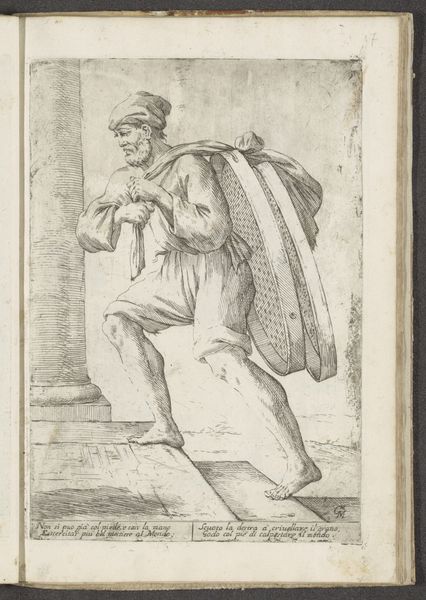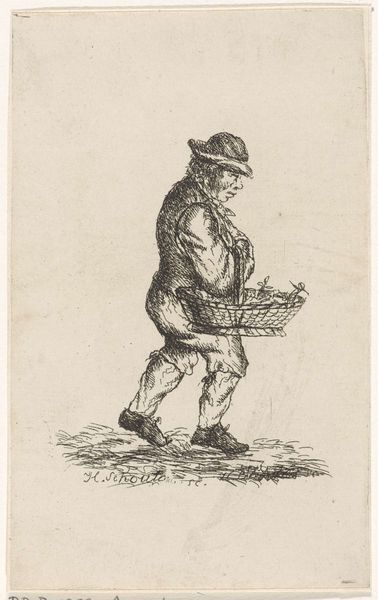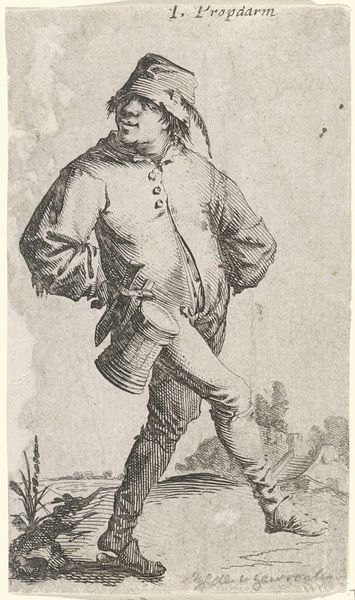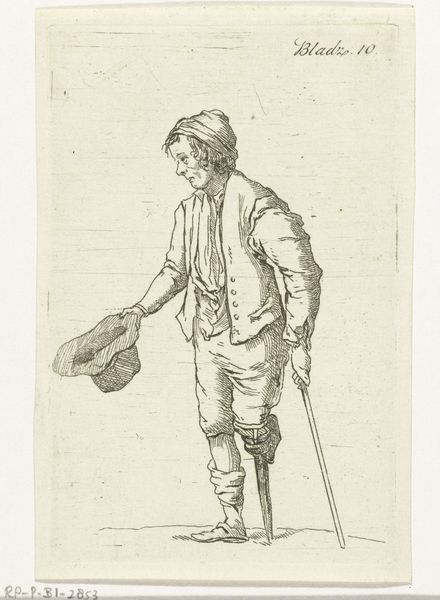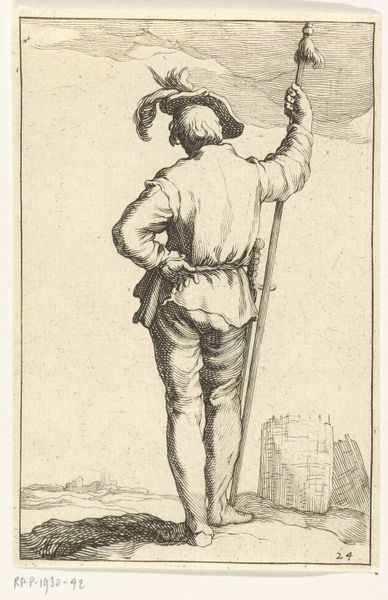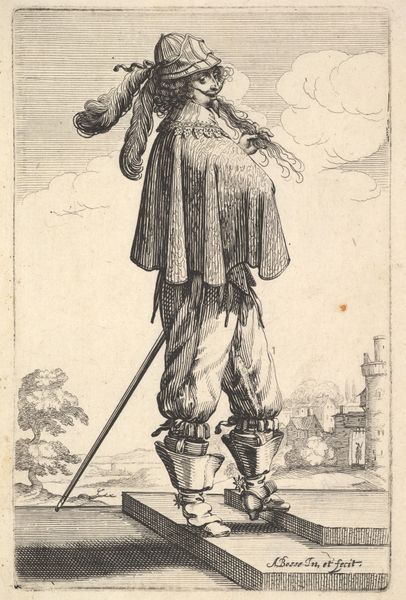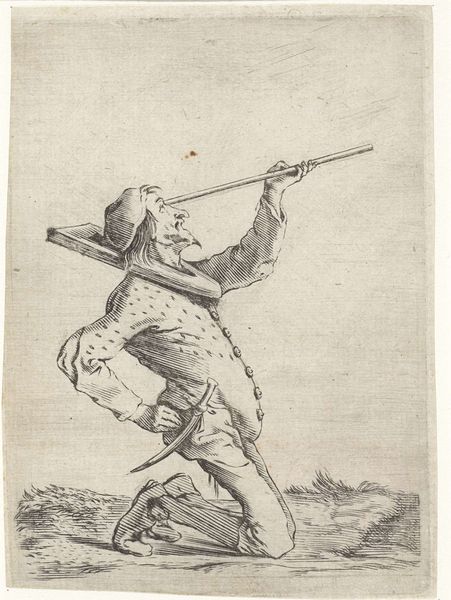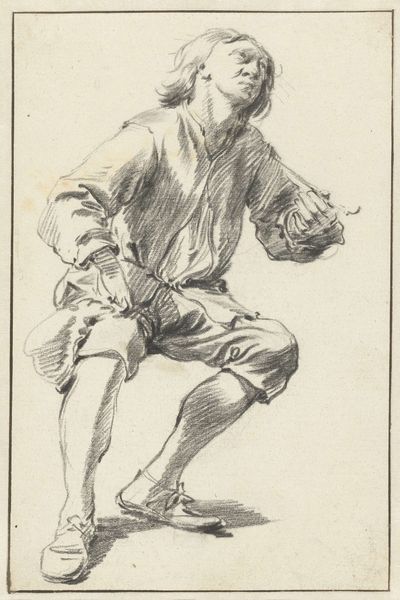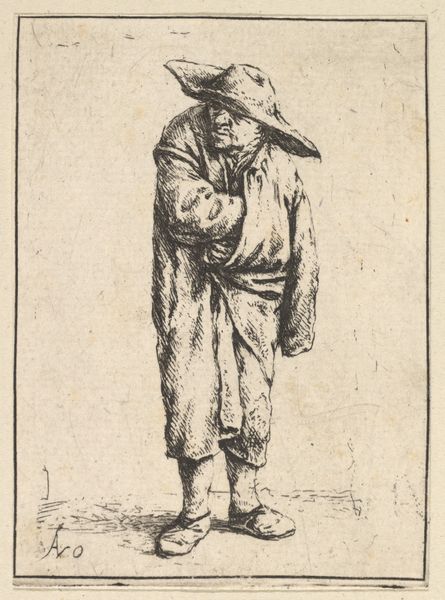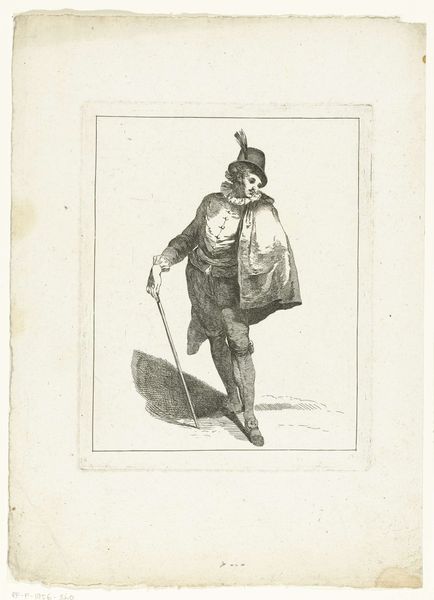
etching
#
portrait
#
narrative-art
#
baroque
#
etching
#
figuration
#
genre-painting
Dimensions: height 277 mm, width 197 mm
Copyright: Rijks Museum: Open Domain
Curator: Welcome. Here we have Giuseppe Maria Mitelli’s etching, "Verkoper van vlaggetjes of waaiers," or "Vendor of Little Flags or Fans," created around 1660. The work is currently housed here at the Rijksmuseum. What strikes you first about this image? Editor: The overwhelming weight of labour, surely! This man, hunched and burdened by what seems to be a precarious stack of chairs, his face etched with fatigue, walks into a nothingness of a landscape. There's an immediacy to his struggle. It really highlights the precarity of informal economies. Curator: It is indeed quite stark. Mitelli's work often depicted scenes from everyday life. "Verkoper van vlaggetjes of waaiers" gives us insight into the world of street vendors in 17th-century Europe. It invites us to contemplate the lives of those who navigated the margins of society through itinerant trade. Editor: It feels as though his individual experience serves as a reflection on broader social conditions, doesn't it? I see him as not just an individual, but rather representative of a whole class struggling with the oppressive systems of labour at the time. Curator: The text that accompanies the image complicates this interpretation slightly. Note how it suggests that among these burdens and needs, a man could have a life that brings no regret. Do you see any kind of satire in Mitelli’s representation? Is it perhaps overly romantic? Editor: That tension between hardship and the suggestion of self-sufficiency is powerful, actually. Even the figure's clothes - though tattered, still suggest a trace of self-respect. I am led to consider: Is this a portrait of stoic perseverance, or a critique of the social structures that necessitate such relentless work? To what extent are they free? Curator: Such genre scenes provide essential records of otherwise invisible histories, giving face and form to those who have remained under the historical radar. It reveals much about society’s class consciousness. Editor: Yes, in this artwork I see the artist drawing our attention to that chasm, inviting us to reflect on how such economic divides have persisted and continue to evolve within society. Curator: Precisely. Perhaps that is why this image remains so impactful to the modern observer. Editor: A worthwhile encounter indeed.
Comments
No comments
Be the first to comment and join the conversation on the ultimate creative platform.
